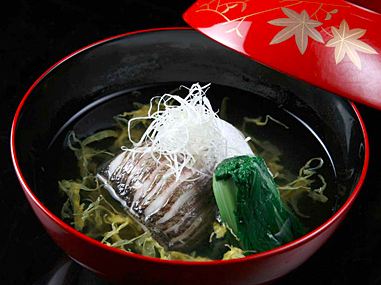Kinmata
4.7/534 Reviews
GionOMR65

Currently closed|Open at 12:00 today
+81-7-52211039
What travelers say:

Kaiseki cuisine was originally a meal served by the host to the guests during the Japanese tea ceremony. However, it is now not limited to the tea ceremony and has become a common high-end cuisine in Japan. "Kaiseki" means to be like a saint wearing a coarse cloth but holding a jade in his heart. Its form is "one soup and three dishes" (or one soup and two dishes).
More
Reviews of Kinmata
Some reviews may have been translated by Google Translate
4.7/5Outstanding
All (34)
Latest
Photo reviews (8)
Positive reviews (18)
Kaiseki cuisine was originally a meal served by the host to the guests during the Japanese tea ceremony. However, it is now not limited to the tea ceremony and has become a common high-end cuisine in Japan. "Kaiseki" means to be like a saint wearing a coarse cloth but holding a jade in his heart. Its form is "one soup and three dishes" (or one soup and two dishes).
Not bad, I chose the cheapest set meal, which is similar to Korean food and snacks. The fried chicken is crispy and fragrant, paired with thick yogurt, the taste is very rich. The hot pot is also large, and two people did not finish it.
The owner took the time to welcome us into his home and came to greet us at dinner which was a nice personal touch. Highly recommend experiencing the kaiseki dining experience here! Next time we will book a room at this beautiful ryokan to fully experience it!
This store is not as gorgeous as many stores are decorated, ordinary hidden in the squatter. His home also has sauces, stains, kunbu and other self-produced takeaways, and opened kaiseki cuisine classes, which can be seen that the restaurant's historical skills are different. Booked a seat for tables and chairs in the Japanese-style private room one day in advance, 16,000 yen per person, and the Japanese-style private room also has a 15% service fee and 8% consumption tax. Calculated it at 19872 yen per person. The handsome guy asked us what taboos we have and recorded our hotel name and room number. Also told that because the ingredients will be purchased according to the reservation, if you cancel, you will have to charge a certain fee. The strong Kyoto-Min temperament in the store gives people a feeling of home, very casual, warm and comfortable. The soft lights in the corridor are as bright as new floors. In the middle of the house is a garden built by yourself, small and exquisite, very Kyoto characteristics. The waiter led us to a private room on the second floor. The private room was quite spacious for four people, and there was an inner balcony where you could see the small garden downstairs. The room is elegant and Zen, calligraphy and paintings show the artistic temperament, antique furniture tables and chairs give a nostalgic atmosphere. The woman in the traditional kimono served us tea and asked us if we wanted a drink. We would not drink it and said it was better to drink tea. So we made black tea and sent a hot towel to wipe our hands. The waiter will explain the name, composition and eating of each dish in fluent English, of course, we can only discern what to eat from the eyes of individual words in the clouds and mist. Overall, kaiseki cuisine pays great attention to the elegance of the dining environment, the artistic ornamentalness of the food plate, the delicate use of utensils, the fresh season of ingredients and the integration of Chinese medicine into the seasoning, combining diet and art to push the deliciousness to the extreme. After the meal, the boss came up to thank us for coming, and printed a beautiful menu, even the cloth printed with the name is also given to us as a souvenir. After paying the bill, the boss and the handsome chef sent us to the door to bow and thank us for leaving. Later, we passed by the door and the boss greeted us warmly. His family can only brush international credit cards such as VISA, MasterCard, JCB, and no UnionPay.
An old Japanese-style travel shop run by a well-preserved family is reported to have a history of 200 years, and the main thing is kaiseki dinner. The boss is fluent in English and communicates without problems. The store often uses local ingredients, and the flavor of each ingredients is fully demonstrated. The entrance is fresh and sweet Q bounces back to Gan. The service is also super first-class. The food is made with care. The portion seems to be small but it is actually very enough. It was an unforgettable and satisfying dining experience.
On the way back to the hotel, I went to the hotel to do the Raiders. When I was doing the Raiders, I had a spare restaurant called Near You. It was very close to the hotel on the edge of the Jin Market, and I was lucky to book a seat tomorrow night. The handsome guy who received us was very fluent in English and helped us book seats for tables and chairs in the Japanese-style private room, which is 16,000 yen per person.
It is a local Japanese food store in Kyoto. Listening to the boss's introduction, this store has a history of nearly two hundred years. The taste is also passed down from the ancestors. The result did not disappoint me, I saw that the boss was really very careful in cooking every food.